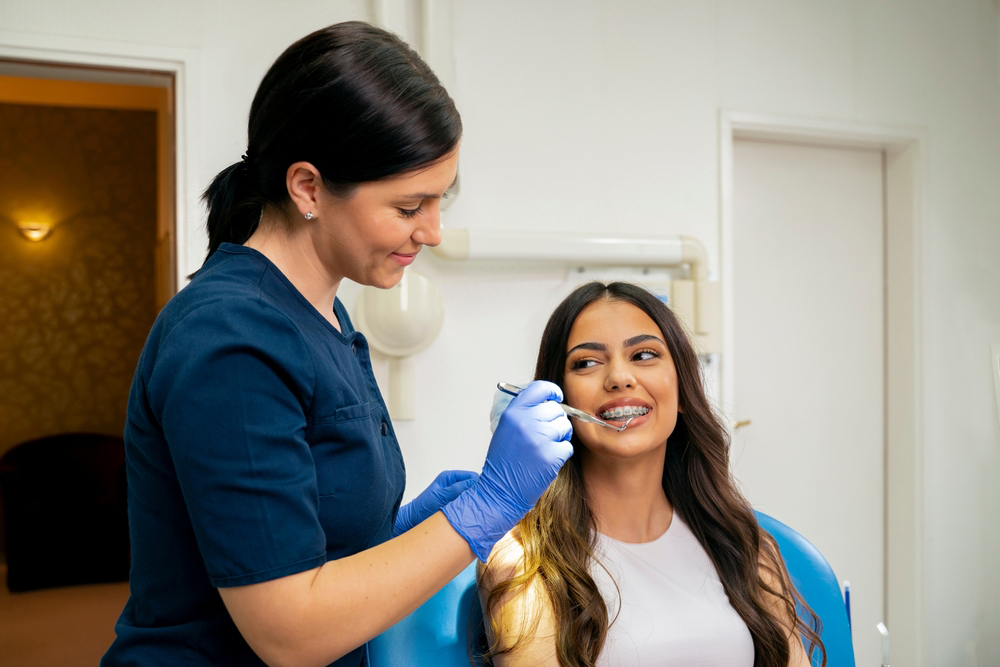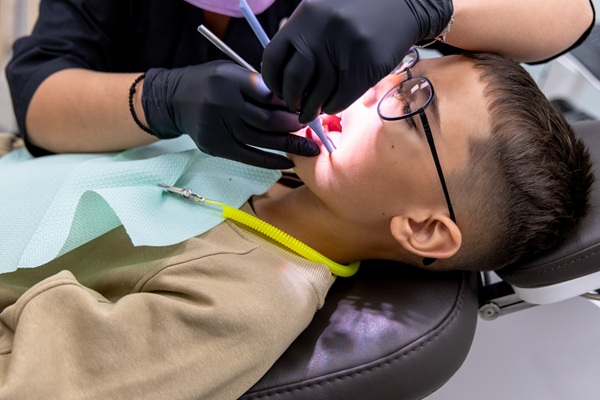5 Popular Adult Orthodontic Treatments

Adult orthodontics can correct your teeth and give you a satisfactory smile. With all the advancements in the dental community today, you have many treatment options to choose from.
Popular adult orthodontic options
Braces are one of the most common treatments in adult orthodontics. But wearing braces is typically not an appealing choice for an adult due to aesthetic concerns. Fortunately, there are a few options for braces.
Conventional braces
These types of braces consist of metal wires with a single bracket cemented on the front of each tooth, with a few bands in the back to anchor the wires. Another option for conventional braces is to switch out the metal for a clear or tooth-colored ceramic material, so the braces are not as noticeable.
Self-ligating braces
These braces stand out from the other types because the wire will pass through a small metal clip on the bracket. This means self-ligating braces do not need elastic bands to help move the teeth.
Lingual braces
This type is virtually invisible because the brackets are cemented to the back sides of the teeth, whereas the other types of braces are cemented on the fronts of the teeth. However, since lingual braces must be custom made, they are a pricier option.
Aligners
These are clear trays that are switched out every two weeks to make adjustments for the movement of the teeth. They are worn between 20 to 22 hours a day and are only taken out for meals and an oral hygiene routine. While this type of adult orthodontics is less noticeable, it will require a great deal of discipline and commitment to successfully complete the treatment.
Dental implants
According to the American Dental Association, dental implants are popular solutions for patients who have missing teeth or uncomfortable dentures or do not have the desire to have their good tooth structure altered to make a bridge. They are designed to blend in with other teeth, so they are not obvious.
Veneers
Veneers are thin, tooth-colored layers of porcelain that go on top of natural teeth. They are typically used to repair chipped, broken, dull, or stained teeth. While this option is a “quick” fix, veneers can be quite expensive.
Dental crowns
Dental crowns can be ideal options for adult orthodontics. A crown is a tooth-shaped cap placed over a damaged tooth. This helps restore the tooth’s shape and size, along with its durability. Crowns can even improve the tooth’s appearance. Once cemented into place, it will fully encase the visible part of that tooth.
True dental health begins with straight teeth
Many people get braces to improve the aesthetic of their smile, but that is not the only benefit of straightening the teeth. Patients typically also experience increased self-esteem and other psychological advantages after receiving orthodontic treatment. A healthy grin can be a confidence booster, which is essential for success in various aspects of life.
Aside from the mental and emotional benefits, straighter teeth can also promote better oral health because they are less likely to trap food. The dental professional is the ideal person to advise patients on the best course of action, as they will be able to evaluate their individual cases and provide them with options tailored to their specific needs.
Getting braces: What to expect
A visit with the dentist is required before getting braces. The dentist will examine the patient’s teeth and bite, take pictures and X-rays if necessary, and then provide a list of possible treatments and a recommendation as to which one is best for the patient. If their situation is particularly complicated, the dentist may suggest different alternatives to get the best possible outcome.
An imprint or scan of the teeth may be taken once the patient and the dentist have settled on a treatment plan, so any necessary bespoke orthodontic appliances can start to be fabricated. The preferred appliances will be available during the next visit, where the patient will be fitted with them and given care instructions. As they become used to having equipment on their teeth, they may suffer pain, discomfort, and difficulties with speaking at first. Pain and trouble with speaking often ease within two weeks.
Conclusion
If you are suffering from a crooked smile, chipped or stained teeth, or even missing teeth, we can help. Contact our office today so we can schedule your appointment for adult orthodontics.
Request an appointment here: https://nettsmiles.com or call Nett Pediatric Dentistry & Orthodontics at (623) 759-7658 for an appointment in our Phoenix office.
Check out what others are saying about our dental services on Yelp: Orthodontics for Adults in Phoenix, AZ.
Recent Posts
Regular visits to a pediatric dentist who specializes in young patients are an important part of establishing good oral health practices. Many instances of severe dental conditions in children stem from either a lack of regard for proper hygiene or a lack of knowledge on the proper ways to care for a child's teeth. Check…
A baby root canal may sound scary, however, it is nothing to be afraid of. Modern-day dentistry has allowed for the evolution of gentler techniques and safer approaches, thus reducing the risk of complications and pain during the procedure.Baby root canals, in particular, are done differently as they are performed in a pediatric dentistry setting,…
Although receiving orthodontic treatment is not exactly exciting, you can make braces for kids fun. Braces are significantly less noticeable than they were in the past, and some are nearly undetectable. The latest braces are also more comfortable and dependable, allowing kids to focus on the things that matter. Today’s braces provide a wider range…
Composite fillings are a popular choice for filling cavities in both children and adults due to their natural appearance and versatile benefits. Unlike traditional silver or gold fillings, composite fillings are tooth-colored and blend seamlessly with the natural tooth structure. This makes them a highly desirable option for those who prioritize aesthetics in their dental…


